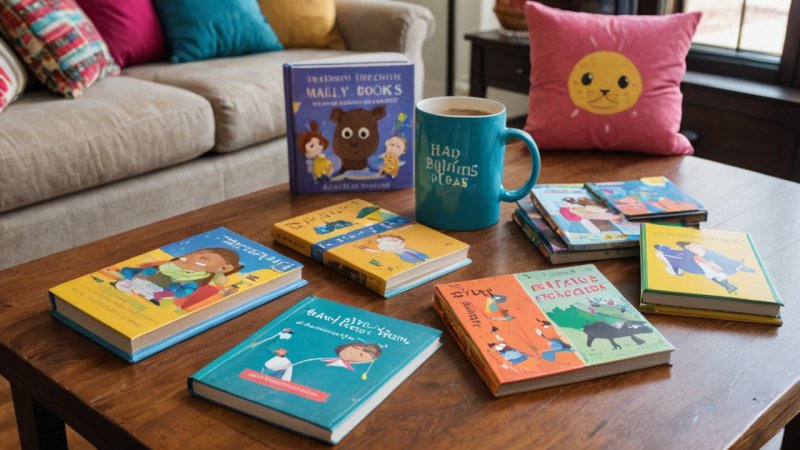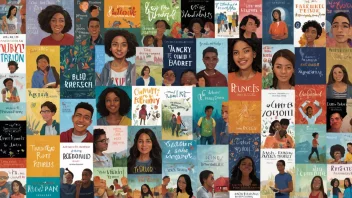In today’s world, issues like bullying and peer pressure have become increasingly pervasive, impacting the lives of young readers as they navigate their formative years. Books have always served as a powerful medium for understanding complex social issues, providing insight, empathy, and solace to those who may feel isolated or misunderstood. Literature has the unique ability to reflect our experiences and open up conversations about sensitive topics like bullying and peer pressure. This article explores a range of children’s books that effectively tackle these crucial themes, aiming to empower young readers with the knowledge and confidence to face such challenges.
The Importance of Addressing Bullying in Children's Literature
Bullying is not just a buzzword; it is a reality for many children. Literature that addresses bullying serves several purposes: it validates the experiences of affected children, offers coping mechanisms, and fosters empathy among peers. Through relatable characters and engaging narratives, young readers can see themselves in the stories, which can be both comforting and enlightening. By confronting bullying head-on, these books encourage discussions that can lead to greater awareness and understanding in both children and adults.
Recommended Books that Tackle Bullying
Here are some exceptional titles that delve into the themes of bullying and peer pressure, offering valuable insights for young readers:
- “Wonder” by R.J. Palacio - This heartwarming tale follows Auggie Pullman, a boy with facial differences, as he navigates the complexities of elementary school. The story beautifully illustrates the impact of kindness and acceptance, challenging the reader to consider how we treat others.
- “The Juice Box Bully” by Bob Sornson and Maria Dismondy - Aimed at younger readers, this book tells the story of a new student who is a bully. Through the power of friendship and support, the children learn how to stand up for themselves and others, promoting a message of resilience.
- “Chrysanthemum” by Kevin Henkes - This picture book addresses the theme of teasing and self-acceptance, as little Chrysanthemum learns to embrace her unique name and individuality despite the taunts of her peers.
- “Stand Tall, Molly Lou Melon” by Patty Lovell - The story of Molly Lou Melon, a girl who is different but proud of who she is, teaches children about self-confidence and the importance of not letting others' opinions define them.
- “The Name Jar” by Yangsook Choi - This beautifully illustrated book follows a young girl who struggles with her name in a new country. It tackles issues of cultural identity and acceptance while encouraging children to celebrate diversity.
Peer Pressure: Navigating the Social Landscape
Peer pressure can be just as daunting as bullying, influencing young minds in ways that can lead to poor decisions or feelings of inadequacy. Books that address peer pressure often highlight the importance of self-esteem, critical thinking, and the strength to say no when necessary. They provide young readers with strategies to handle difficult social situations, ultimately reinforcing the idea that it’s okay to be different.
Notable Titles on Peer Pressure
Here are some notable books that explore the theme of peer pressure:
- “The Absolutely True Diary of a Part-Time Indian” by Sherman Alexie - Through the lens of a Native American teenager, this book tackles issues of identity, peer pressure, and the challenges of choosing one's path in life.
- “The Giver” by Lois Lowry - A classic that explores conformity and the importance of individuality, this dystopian tale encourages readers to think critically about societal norms and expectations.
- “The Outsiders” by S.E. Hinton - This coming-of-age novel follows two rival groups of teenagers, emphasizing the impact of peer influence and the importance of understanding and empathy among different social groups.
- “Fish in a Tree” by Lynda Mullaly Hunt - A story about a girl who struggles with dyslexia, this book emphasizes the importance of being true to oneself and the value of understanding the struggles of others.
- “Better Nate Than Ever” by Tim Federle - This humorous novel follows a boy who faces the pressures of fitting in while pursuing his passion for musical theater, encouraging readers to embrace their true selves.
Creating a Safe Space for Discussion
Reading these books can provide a safe space for children to reflect on their own experiences and feelings. Parents, educators, and caregivers can facilitate discussions around the themes presented in these stories, encouraging children to express their thoughts and feelings. Book clubs or reading groups focused on these titles can also foster a sense of community and belonging among young readers, allowing them to share their perspectives and support one another.
Conclusion: Empowering Young Readers
Books addressing bullying and peer pressure are more than just stories; they are tools for empowerment. By engaging with these narratives, young readers can develop empathy, resilience, and self-confidence. As they learn to navigate the complexities of social interactions, these stories provide them with the insights necessary to stand up against bullying and resist peer pressure. Ultimately, fostering a love for reading and exploring these important themes can equip children with the skills they need to create a more compassionate, understanding world.






